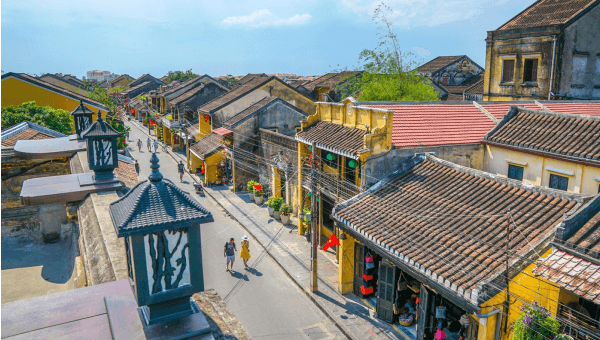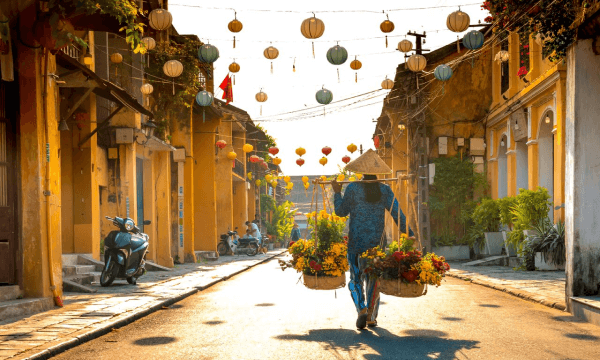Hội An, located in Central Vietnam and on the picturesque Hoài River, is regarded as an ancient town recognized by UNESCO as a World Cultural Heritage Site on December 4, 1999. Hội An is currently one of the destinations attracting the attention of international tourists.
Going back in time, from the first human footsteps on this land to the present, the little land still holds the ambitions and aspirations of the people who reclaimed it; carried within themselves the desire for freedom, the will to rise, and the creative thinking to survive and develop.
Because one side of Hội An is adjacent to the East Sea - the maritime route between the Pacific Ocean with the Indian Ocean, it has been deemed a "water meeting" point. This sea, which is formed by the confluence of the large rivers of Quảng Nam province before emptying into the great sea, plays a very important role in global maritime trade. This was one of the main factors that contributed to Hội An becoming the busiest international commercial port in Southeast Asia in the 16th and 17th centuries.
Merchant ships from Japan, China, the Netherlands, Portugal,... crowded to Hội An to trade. Some foreigners have resided here for a long time, forming residential communities and leaving on this land the heritages of history, architecture, culture, religious activities, etc. During that process of coexistence, many generations were born, grew up and aged; creating a process of interchange and acculturation with many major civilizations in the world. Since then, the "cultural and creative sources" have been constantly nurtured and spread to each individual resident here, creating a distinct "Hội An feature".
Because of these advantageous factors, Hội An people strive even harder to meet their essential needs and constantly promote their ability to think and be creative in all areas of life, including art, cuisine, construction, and production. Folk arts and traditional crafts are two sectors of Hội An that are rich in creative content and well-developed.
The occupations and occupation villages formed in association with the natural and social conditions of the city can be mentioned, such as Kim Bồng carpentry village, Thanh Hà pottery village, Trà Quế vegetable village, bamboo painting occupation, Cẩm Thanh bamboo, etc. Products from Hội An occupation villages that are meticulously crafted through the hands of talented and creative artisans and craftsmen have been transported by merchant ships all over the world to serve the community's life and bring fame to this land.
After hours of hard work, Hội An resident community composed rehearsals, folk songs,... both entertaining after hard work sessions; exchanging and fostering affection; and enriching the cultural and spiritual life of the indigenous people. Today, the field of Hội An folk arts with forms such as Bài Chòi singing, Bả Trạo singing, Bội singing,... has been included in tourism activities to provide many new experiences for visitors to Hội An, as well as toured many countries around the world.
In the face of change, Hội An has transitioned from a heritage city to the goal of becoming a creative city. The government and people of Hội An have flexible adaptation as they both try to preserve and promote traditional values, while developing inner strength and creative thinking so that endogenous and exogenous factors can resonate, bringing sustainable values to locals and tourists to Hội An.





 VietNam
VietNam












